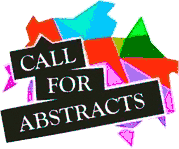
Mohammed Bawatna
University of Duisburg-Essen, Germany
Title: Development of a robust Wireless Underground Sensor Network (WUSN) Supporting Early Warning of Slope Instability in Hillslopes
Biography
Biography: Mohammed Bawatna
Abstract
Recently, many applications that require the Wireless Underground Sensors Network (WUSN) technology has emerged, such as automatic smart irrigation systems and monitoring underground water/gas pipelines. Creating a robust WUSN in a heterogeneous soil medium is one of the most difficult challenges that face both of the researchers and developers, due to the extreme path loss, reduced propagation velocity, reflection, scattering, noise, and multipath fading.
The main objective of this research is to monitor the landslide prone hillslopes in the hostile environments based on the technology of WUSNs and the ZEA-2 intelligent Network Operating Device (iNODE) system. Therefore, we will focus on the efficiency and the quality of the wireless underground channels at sub-GHz RF bands, in particular: the total attenuation due to reflection and propagation effects in the dry and wet soil. The development in the Physical and Datalink layers requires the measuring of Power Delay Profile (PDP), and investigate the problem of fluctuation. Therefore, a Testbed measurements were taken in the Electromagnetic Compatibility (EMC) laboratory for further accuracy. Validations of the experimental channel measurements with the numerical estimation in Bogena et. al. model show a good approximation. In addition, we include the numerical estimation for underground-to-underground channels, and the antennas gain effect. We provide these results, that we will present, not only to be the guidelines for the re-design of more reliable and dependable matching Filters, selected antennas and the required power to transmit but also to pave the ways for future studies in underground beamforming and antenna diversity.

